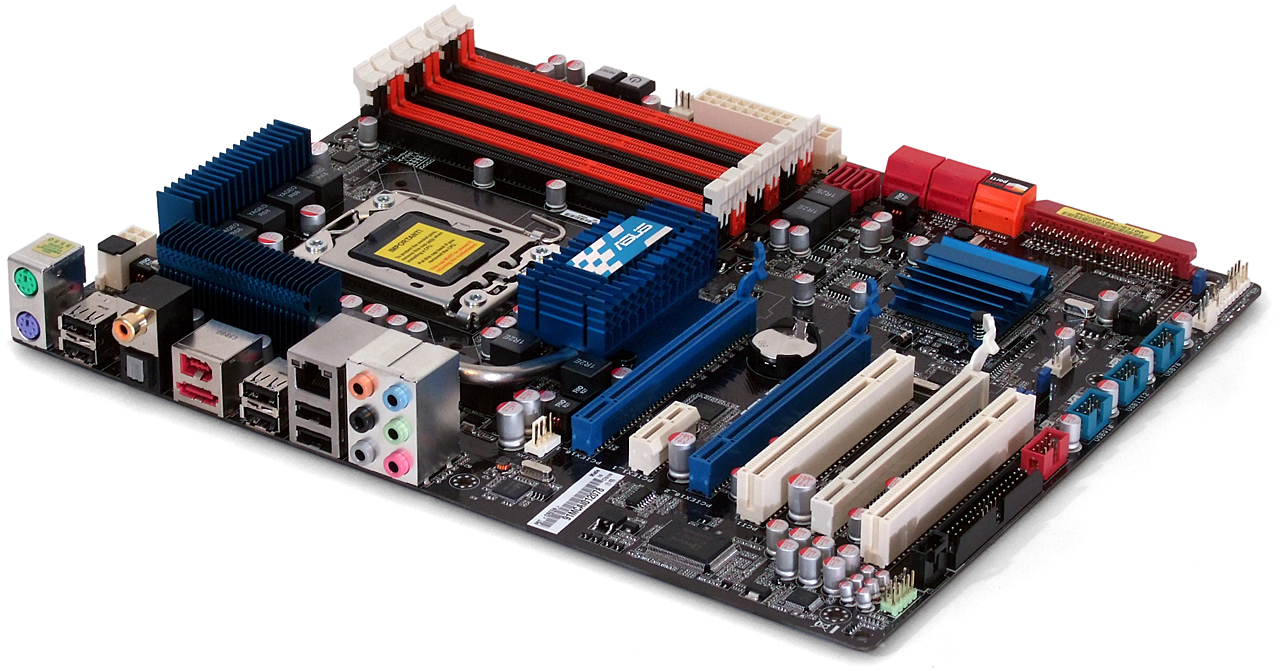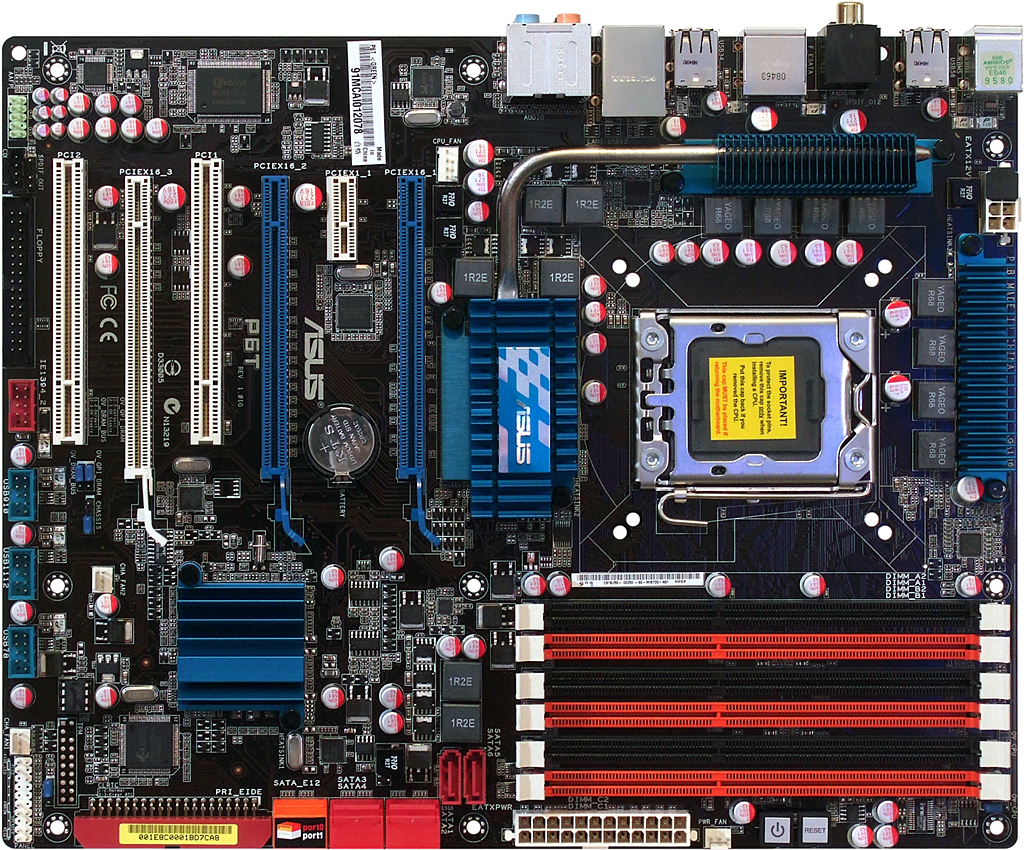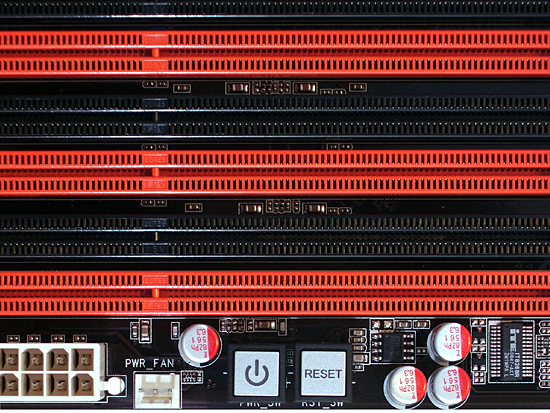X58 Roundup: Seven $200-300 Core i7 Boards
Asus P6T
Features and Layout
The P6t represents Asus’ attempt to cut cost without reducing quality. Most visible of its cost-saving measures is the simplified heatpipe with aluminum sinks, but like most other sub-$300 motherboards it also has reduced bandwidth to its third x16-length PCI-Express 2.0 slot.
The X58 northbridge features 36 PCIe 2.0 lanes, which Asus divides into two x16 and one x4 pathway set to feed three graphics card slots. An x4 slot using this second-generation bandwidth-doubling technology has the same performance as previous x8 slots, so it’s probably barely adequate for a single-GPU Radeon HD 4870 graphics card and nothing more. Other, more practical uses for this slot include PCIe x8 RAID controllers or an even faster x4 Fusion-io ioDrive.
The most disconcerting problem for us is that Asus didn’t put its x4-bandwidth PCIe 2.0 slot between the two x16 slots. By separating the two full-bandwidth slots by only two spaces, Asus leaves only the tiniest of room for airflow between two double-slot graphics cards when both are installed in the “proper” slots. This airflow reduction is significant enough to severely limit the first card’s overclocking capability.
We also took issue with the bottom-rear-corner floppy and front-panel audio header placement, which complicates cable routing to middle and upper bays of tower cases. Floppy drives may only be useful when installing Windows XP in AHCI or RAID disk modes, but front-panel audio connector placement affects a great number of case designs. Both of these problems are typical of current products from other vendors as well.
Anyone who can look past those few quirks will be pleased with the P6T's other features. One particularly notable addition is its ability to support either LGA-1366 or LGA-775 CPU coolers--a feature that opens the board to a great number of enthusiasts who already own top cooling solutions and have little desire to spend large sums of money on similar hardware.
Four of the ICH10R’s six SATA ports point forward, along with two from an add-on controller. This popular design makes room for extra-long expansion cards, but also requires additional space between the motherboard’s leading edge and any nearby drive cages. The other two ICH10R ports face outward, avoiding any such clearance issues.
Get Tom's Hardware's best news and in-depth reviews, straight to your inbox.
Power and reset buttons have become common on enthusiast-class motherboards in most price ranges, but the P6T is one of only a few to move these to the top of the front edge. That makes them easier to reach once the motherboard is installed in a case.
| Asus P6T (Revision 1.01G) | |
|---|---|
| Northbridge | Intel X58 Express |
| Southbridge | Intel ICH10R |
| Voltage Regulator | Eight Phases |
| BIOS | 0306 (02/03/2009) |
| 133.3 MHz Base Clock | 133.6 MHz (+0.20%) |
| Clock Generator | ICS 9LPRS918JKLF |
| Connectors and Interfaces | |
| Onboard | 3 x PCIe 2.0 x16 (Modes: x16, x16, x4) |
| 1 x PCIe x1 | |
| 2 x PCI | |
| 3 x USB 2.0 (2 ports per connector). | |
| 1 x IEEE-1394 FireWire | |
| 1 x Floppy | |
| 1 x Ultra ATA (2 drives) | |
| 8 x Serial ATA 3.0Gb/s | |
| 1 x Fan 4-pin (CPU) | |
| 3 x Fan 3-pins (Chassis, Power) | |
| 1 x Front Panel Audio connector | |
| 1 x CD-Audio In | |
| 1 x S/P-DIF Out | |
| 1 x Power Button | |
| 1 x Reset Button | |
| IO panel | 2 x PS2 (keyboard and mouse) |
| 6 x USB 2.0 | |
| 2 x Digital Audio Out (Coaxial + Optical) | |
| 1 x IEEE-1394 FireWire | |
| 1 x External SATA (eSATA) 3.0Gb/s | |
| 1 x RJ45 Ethernet | |
| 6 x Analog Audio Jacks (8-ch. out, 4-ch. in) | |
| Mass Storage Controllers | |
| Intel ICH10R | 6 x SATA 3.0Gb/s (RAID 0, 1, 5, 10) |
| JMicron JMB363 PCIe | 1 x Ultra ATA-133 (2-drives) |
| 1 x eSATA 3.0 Gb/s | |
| 1 x SATA Interface for JMB322 Hub | |
| JMicron JMB322 Port Multiplier | 2 x SATA 3.0 Gb/s |
| Network | |
| Realtek RTL8111C PCIe | Gigabit LAN |
| Audio | |
| Realtek ALC1200 HD Audio Codec | Eight-Channel (7.1 Surround) Output |
| IEEE-1394 FireWire | |
| VIA VT6315N PCIe | 2 x FireWire 400 (1x Internal, 1x I/O Panel) |
The JMB363 controller supports up to two Ultra ATA 133 drives, an eSATA 3.0 Gb/s port, and two internal SATA 3.0 Gb/s drives via a JMB322 port multiplier. Performance should drop dramatically during multi-device access, since the JMB363 uses only a single 2.5 Gb PCIe pathway.
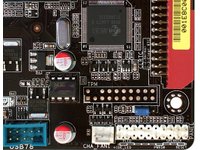
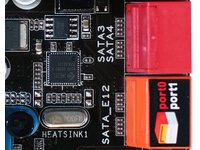
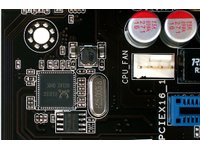
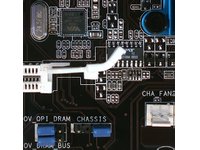
Conversely, independent PCIe links provide over twice the required bandwidth to the RTL8111C network and VT6315N FireWire controllers.
Check prices for Asus' P6T
Current page: Asus P6T
Prev Page X58 SuperComputer BIOS, Software And Accessories Next Page P6T BIOS, Software And Accessories-
dragonsprayer hey guys good info - its 4am i should not be posting with one eye closed to see the screen!Reply
Warpedsystems has tested a least half of these, my Evga failed out of the box, i would normally let that slide but with all the 680i and 780i issues and failures over the years - beware. So i can not speak of the evga - i will say the 780i FTW is kick butt mobo!
Asus is asus and 90% or so of my stuff i ship, i switched to the new P6t from the deluxe and have had some issues - i am sitll working on the P6T tonight as i type. Opps- my jr tech set the blk to 180 and over clocked the QPI to max - i think he smoked the mobo ran amd cpu = its first in 5 years if so?
Some did not make it? no gigabyte? gigabyte is really pushing on asus for number one - really! Ya, all the evga fans are what? I can say how many evga mobos break and fail: pci-e slot fail, pressure around the cpu mounting failure, lock ups - evga lock ups are just accepted as part of life! We all know that evga error code!
I have to say the gigabyte and the higher end asus deluxe version sure seem a lot more reliable for 4ghz systems - again - we only took 1 evga and it locked up and i said "that is it the last time" - the FTW 780i gives me faith evga will come around on x58.
what ever you do - do not oc the blk and QPI - poof!
nice stuff THG! -
Crashman dragonsprayerhey guys good info - its 4am i should not be posting with one eye closed to see the screen!Warpedsystems has tested a least half of these, my Evga failed out of the box, i would normally let that slide but with all the 680i and 780i issues and failures over the years - beware. So i can not speak of the evga - i will say the 780i FTW is kick butt mobo!Asus is asus and 90% or so of my stuff i ship, i switched to the new P6t from the deluxe and have had some issues - i am sitll working on the P6T tonight as i type. Opps- my jr tech set the blk to 180 and over clocked the QPI to max - i think he smoked the mobo ran amd cpu = its first in 5 years if so?Some did not make it? no gigabyte? gigabyte is really pushing on asus for number one - really! Ya, all the evga fans are what? I can say how many evga mobos break and fail: pci-e slot fail, pressure around the cpu mounting failure, lock ups - evga lock ups are just accepted as part of life! We all know that evga error code!I have to say the gigabyte and the higher end asus deluxe version sure seem a lot more reliable for 4ghz systems - again - we only took 1 evga and it locked up and i said "that is it the last time" - the FTW 780i gives me faith evga will come around on x58.what ever you do - do not oc the blk and QPI - poof!nice stuff THG!Reply
One of the companies forgot to send a board and didn't respond in time to the reminder...see the introduction of the article. What makes you think that company wasn't Gigabyte? -
Which ASUS board was actually tested - the plain "P6T" or "P6T SE?" There are subtle differences, like JMB322 in P6T but not in P6T SE. Also, some difference in e.g. back panel IO and advertised overclocking capabilities.Reply
Judging from the feature list, the board was plain P6T, but all pictures seem to be of P6T SE.
-
Crashman RipaWhich ASUS board was actually tested - the plain "P6T" or "P6T SE?" There are subtle differences, like JMB322 in P6T but not in P6T SE. Also, some difference in e.g. back panel IO and advertised overclocking capabilities.Judging from the feature list, the board was plain P6T, but all pictures seem to be of P6T SE.Reply
http://media.bestofmicro.com/7/3/192063/original/asus_p6t_kit.jpg -
wicko Sadly, none of the good mobos in this review are sub 300$ in Canada.. what a damn ripoff.Reply -
hardwarekid9756 Could you expound on "Catastrophic Failure?" I'd be interested to know what all went wrong in the fray. I've been using an ASRock Mobo recently, and noticed it full-out sucked at Overclocking when compared to my MSI board, so I'd like to know what exactly caused the thing to bomb out.Reply -
salavat23 No Gigabyte.Reply
Sorry, but you can't make a good review without including one of the top manufacturers of X58 motherboards. -
salavat23 No Gigabyte.Reply
Sorry, but you can't make a good review without including one of the top manufacturers of X58 motherboards. -
msdx_bizkit Gigabyte EX58-UD3R and MSI X58 Pro are the cheapest X58 motherboards out there at the moment. (~250$ CAD - NCIX) Could you guys give me your input on those two particuliar boards?Reply
I am not the extreme overclocking kinda guy. In fact, I still am running on default settings on my Core 2 Duo E6750. I don't plan to overclock over 3,2Ghz on my new 920, if I ever do overclock.
Neither boards support SLI, but I'd be interrested in a dual Radeon 4870 1GB Crossfire config.
Thanks in advance -
daft i was just wondering if the "more on this topic" could be omitted in future articles, i like to skip to the conclusion in the mornings and its annoying to hit more on this topic and get a little window than to go to the conclusionReply
